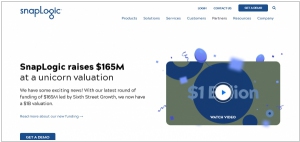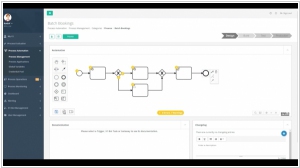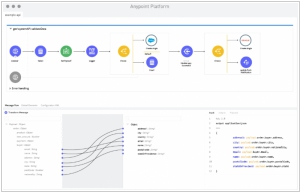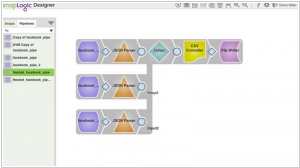MuleSoft vs SnapLogic
May 27, 2023 | Author: Michael Stromann
MuleSoft and SnapLogic are both integration platforms that help organizations connect various applications, systems, and data sources. However, there are notable differences between the two.
MuleSoft's Anypoint Platform is a comprehensive integration solution that provides a wide range of tools and capabilities for building, managing, and scaling integrations. It offers a powerful API-led approach, allowing organizations to design, secure, and govern APIs effectively. MuleSoft's platform focuses on flexibility, reusability, and robustness, making it suitable for complex integration scenarios and enterprises with sophisticated integration needs.
SnapLogic, on the other hand, is an integration platform as a service (iPaaS) that emphasizes ease of use and self-service capabilities. It provides a visual interface and drag-and-drop functionality for creating integrations, making it accessible to non-technical users. SnapLogic offers a large library of pre-built connectors and offers built-in data integration, application integration, and data transformation features. It is often favored by organizations looking for a user-friendly, cloud-based integration solution that can be quickly implemented.
See also: Top 10 Cloud Integration software
MuleSoft's Anypoint Platform is a comprehensive integration solution that provides a wide range of tools and capabilities for building, managing, and scaling integrations. It offers a powerful API-led approach, allowing organizations to design, secure, and govern APIs effectively. MuleSoft's platform focuses on flexibility, reusability, and robustness, making it suitable for complex integration scenarios and enterprises with sophisticated integration needs.
SnapLogic, on the other hand, is an integration platform as a service (iPaaS) that emphasizes ease of use and self-service capabilities. It provides a visual interface and drag-and-drop functionality for creating integrations, making it accessible to non-technical users. SnapLogic offers a large library of pre-built connectors and offers built-in data integration, application integration, and data transformation features. It is often favored by organizations looking for a user-friendly, cloud-based integration solution that can be quickly implemented.
See also: Top 10 Cloud Integration software
MuleSoft vs SnapLogic in our news:
2021. SnapLogic raises $165M to help enterprises integrate and automate their disparate apps and data

SnapLogic, a company specializing in enterprise app and data integration, has recently raised $165 million. In a competitive landscape that includes players like Workato, Tray.io, and MuleSoft, SnapLogic has established itself by assisting businesses in consolidating and utilizing data from diverse applications. This has proven to be particularly valuable for enterprises that have adopted various applications and infrastructures across multiple clouds, containers, data warehouses, and on-premise data centers over time. With a vast amount of data spread across these platforms, organizations face the challenge of effectively managing and leveraging it. SnapLogic's platform offers a solution for enterprises to seamlessly integrate their apps and data, enabling them to optimize data utilization and achieve better outcomes.
2021. Salesforce announces new Mulesoft RPA tool based on Servicetrace acquisition

When Salesforce recently revealed its acquisition of German RPA vendor Servicetrace, many speculated that it could complement MuleSoft, a company purchased by the CRM giant in 2018 for $6.5 billion. MuleSoft, among its various capabilities, assists customers in constructing APIs for legacy systems, while Servicetrace offers automation solutions for such systems. As anticipated, the company has now announced the development of a new tool called MuleSoft RPA, combining the functionalities of MuleSoft and Servicetrace. The acquisition of Servicetrace was finalized on September 2nd, and Salesforce is swiftly integrating it into relevant areas across the organization, with MuleSoft integration being a key focus.




